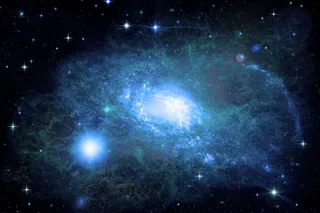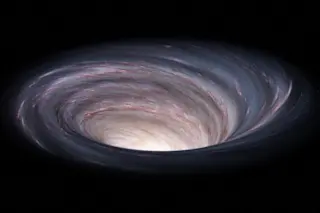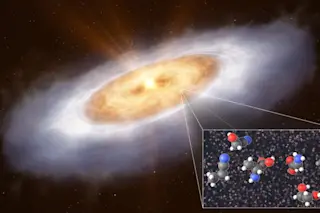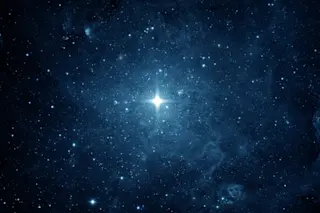It's a galaxy-eat-galaxy world out there. A new study of the Andromeda galaxy, the closest neighbor to our own Milky Way at 2.5 million light years away, has mapped Andromeda in unprecedented detail and found evidence that it grew through devouring smaller galaxies.
Stars and dwarf galaxies that got too close to Andromeda were ripped from their usual surroundings. "What we're seeing right now are the signs of cannibalism," said study lead author Alan McConnachie.... "We're finding things that have been destroyed ... partly digested remains" [AP].
Astronomers had already posited the "hierarchical model" in which small galaxies combine to form large ones, but the new study shows the model in action. The map shows
stars in bright streams and clumps that were also likely ripped from dwarf galaxies that once orbited Andromeda [New Scientist].
Researchers say the clumps of stars around the edge of Andromeda couldn't have formed there, because there wouldn't have been enough gas to give birth to them. The study, published in Nature, also examined the role of the the dwarf galaxy Triangulum. Researchers say it had a close encounter with Andromeda about 2.5 billion years ago that stripped away some of its stars, but that was only a prelude to what's to come. In another 2 or 3 billion years, Triangulum will probably spiral into Andromeda and merge with it completely. Related Content: DISCOVER: A Closer Look at Our Galactic Twin: Andromeda 80beats: Have Astronomers Spotted the First Exoplanet in Another Galaxy? 80beats: Our Milky Way Galaxy: Now Faster and More Massive! 80beats: Chicken-or-Egg Problem: Did Black Holes Form Before the Galaxies That Surround Them?Image: John Dubinski and Larry Widrow. The possible orbit of Triangulum following its near-miss with Andromeda (center right).














